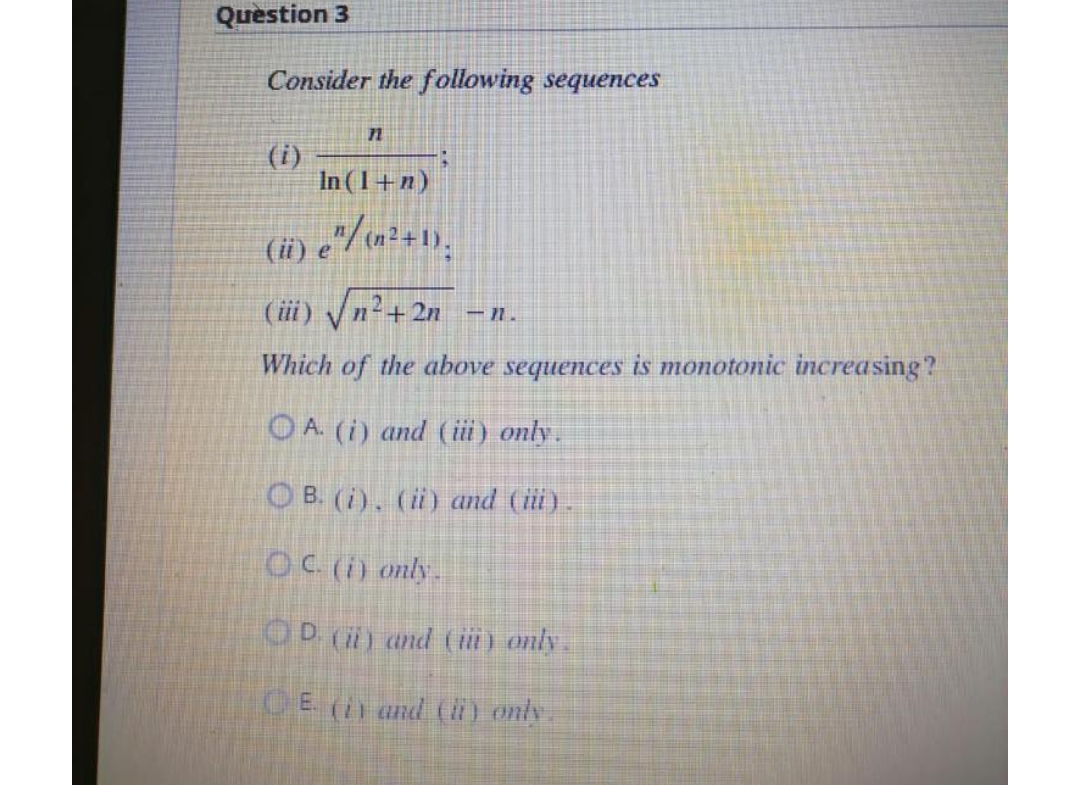Consider the following sequences n G In (1+n) (ii) e^/ (n²+1), (iii) √√n²+ √n²+2n -n. Which of the above sequences is monotonic increasing? A. (i) and (iii) only. OB. (i), (ii) and (iii). OC. (i) only. OD. (ii) and (iii) only. CE (i) and (ii) only.
Consider the following sequences n G In (1+n) (ii) e^/ (n²+1), (iii) √√n²+ √n²+2n -n. Which of the above sequences is monotonic increasing? A. (i) and (iii) only. OB. (i), (ii) and (iii). OC. (i) only. OD. (ii) and (iii) only. CE (i) and (ii) only.
Algebra & Trigonometry with Analytic Geometry
13th Edition
ISBN:9781133382119
Author:Swokowski
Publisher:Swokowski
Chapter10: Sequences, Series, And Probability
Section10.2: Arithmetic Sequences
Problem 1E
Related questions
Question

Transcribed Image Text:Question 3
Consider the following sequences
n
15
In (1+n)
(ii) e^/ (n²+1),
(iii) √√n²+2n
-1.
Which of the above sequences is monotonic increasing?
A. (i) and (iii) only.
OB. (i), (ii) and (iii).
OC. (i) only.
D. (ii) and (ii) only.
E. (i) and (ii) only.
Expert Solution
This question has been solved!
Explore an expertly crafted, step-by-step solution for a thorough understanding of key concepts.
Step by step
Solved in 4 steps

Recommended textbooks for you

Algebra & Trigonometry with Analytic Geometry
Algebra
ISBN:
9781133382119
Author:
Swokowski
Publisher:
Cengage

Algebra & Trigonometry with Analytic Geometry
Algebra
ISBN:
9781133382119
Author:
Swokowski
Publisher:
Cengage